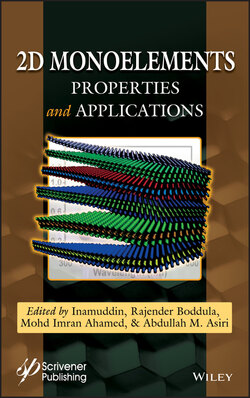Читать книгу 2D Monoelements - Группа авторов - Страница 17
1.2.1.3 Geometric Structure and Raman Spectroscopy
ОглавлениеCrystallographic data and elemental details of phosphorene were gained both theoretically and also experimentally using different techniques such as X-ray cristallography, high performance spectrometers, SEM microscope, and EDX analysis. Phosphorene has been shown to be a nonplanar lattice along and seems to be a bilayer material in the zigzag direction as displayed in Figure 1.1a.
Figure 1.1 Optimized crystallographic structure of (a) 3D BP and (b) 2D BP.
Measurements made by means of preliminary X-ray investigations indicate lattice constants of 3.31 Å and 4.38 Å in ZZ- and AC-axes, respectively, with four atoms forming the unit cell of phosphorene [43, 44]. The experimental result concorde with the theoretical values obtained using ab initio DFT calculations [23, 45].
In phosphorene monolayer, each phosphorus atom is linked to first three nearest neighbor atoms to constitute an sp3 hybridization in a covalent bound [10]. The non-planar geometry leads to two types of bonding, namely, the in-plane bond length d1 is about 2.224 Å , and the out-of-plane bond length d2 that is 2.244 Å, as illustrated in Figure 1.1b. The binding angles y and x are 96.3° and 102.095°, respectively. The height difference between the two half-layers is dz = 2.10 Å .
